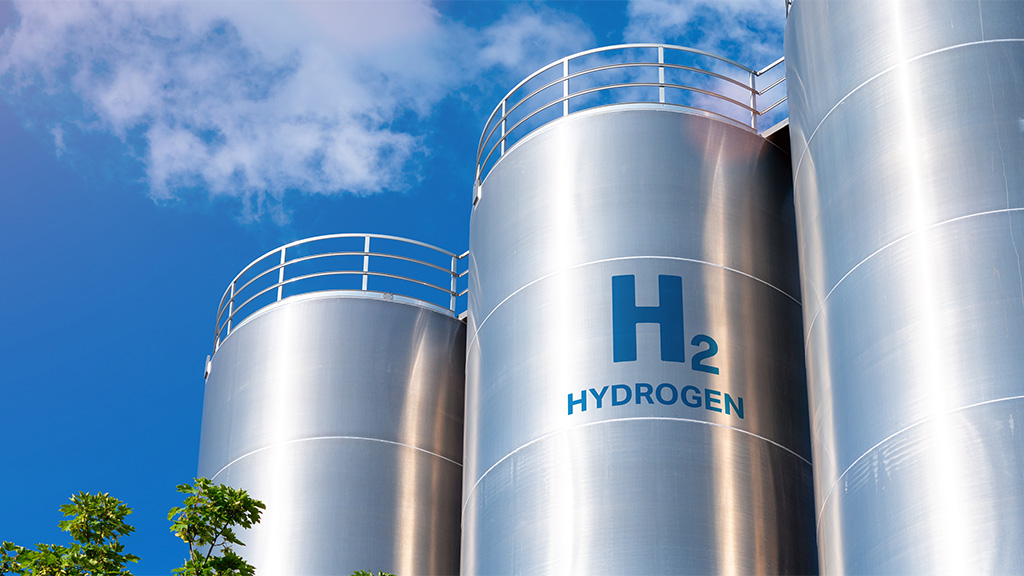ST. JOHN’S — Triple Point Resources Ltd. CEO Julie Lemieux wants people to understand the sheer size of the Fischell Salt Dome, a geological formation on Newfoundland’s west coast she says could play a key role in the green energy transition.
The dome is a thick mound or column of naturally occurring salt deposits, surrounded by layers of rock. If the salt is dissolved and the column is hollowed out and filled with hydrogen, Lemieux said, it could become one of the largest green energy storage facilities in eastern North America.
“The size of the cavern we could build, it could be as big as the Empire State Building,” said Lemieux.
“The model that we have showed that it can be even bigger than that.”
The company Lemieux leads, which is seeking to develop the Fischell site for hydrogen storage, is one of several Canadian companies that have turned their eyes to underground salt caverns as worldwide interest in greener sources of energy takes off.
The concept isn’t new — the petroleum industry has long used underground cavities for the safe storage of hydrocarbons. In Alberta, for example, more than 100 salt caverns have been in use as natural gas storage reservoirs for the past 50 years.
South of the border, the U.S. Strategic Petroleum Reserves holds emergency crude oil stocks in massive salt caverns located along the Gulf Coast.
But interest is now growing in using similar naturally occurring underground structures to store hydrogen, a clean-burning fuel source that many hope will help to displace fossil fuels as countries around the world seek to lower their greenhouse gas emissions.
Hydrogen can be used as a transport fuel, in industrial settings and for electrification. Though most of the hydrogen in use today is produced with natural gas, it can also be produced using clean energy sources such as wind and solar.
Ottawa has a national strategy aiming for a third of Canada’s energy use to be from clean hydrogen by 2050. The government has also signed an agreement with Germany aimed at accelerating commercial-scale exports from Canada to the German market.
While there is much work to do to grow hydrogen production in this country, the East Coast has been identified as a potential hub for the burgeoning sector. There are several projects proposed in the Atlantic provinces that aim to produce clean hydrogen from massive wind farms, and Lemieux said if these projects get up and running, they will need storage capacity.
“This geological structure has been looked at since the ’60s … people knew there was a salt structure there,” said Lemieux, adding tests have revealed the Fischell Salt Dome could have the potential to store more than 35 million cubic metres of hydrogen, or the equivalent of 180,000 tonnes.
“It just wasn’t the right time, and now the time is right with the importance of hydrogen.”
“With all the demand for hydrogen globally, and if all these projects get going on the East Coast, there will be ample demand for storage opportunities for everybody,” said Paul Sparkes, CEO of Vortex Energy Corp., another Canadian company working to develop hydrogen salt storage caverns in Newfoundland.
Hassan Dehghanpour, a petroleum engineering researcher at the University of Alberta, has been studying the feasibility of storing hydrogen in underground salt caverns. He said he believes underground storage makes more sense than the traditional method of storing hydrogen in surface-level tanks.
“The advantage of caverns is that we can store significantly higher amounts of hydrogen,” Dehghanpour said.
“The other one is safety. If you want to store large amounts of hydrogen in surface facilities, there will always be a risk of explosion, while for caverns, they are more than two kilometres under the Earth’s surface, so they are much safer.”
They are also relatively economical, he added. Dehghanpour said the initial cost of developing an individual salt cavern for hydrogen storage — the Fischell Salt Dome has space for several caverns — could be about $20 million, but once they are operational the long-term costs are minimal.
Other countries around the world are also exploring the development of salt caverns for hydrogen. In Utah, a project called Advanced Clean Energy Storage is already construction as part of what is expected to be the world’s largest industrial green hydrogen production and storage facility. Projects have also been proposed in Europe.
Lemieux, of Triple Point Resources, said hydrogen has the potential to be used domestically to power the electricity grid, or can be converted into ammonia for shipment to export markets. In either case, the presence of naturally occurring salt caverns makes developing a hydrogen industry much more practical.
“The salt cavern can solve a lot of the issues that we have with renewables, when it comes to the long-term storage of the energy,” she said.
“We can start using hydrogen on a larger scale, if we have the (storage) volume.”
©2024 The Canadian Press






Recent Comments
comments for this post are closed